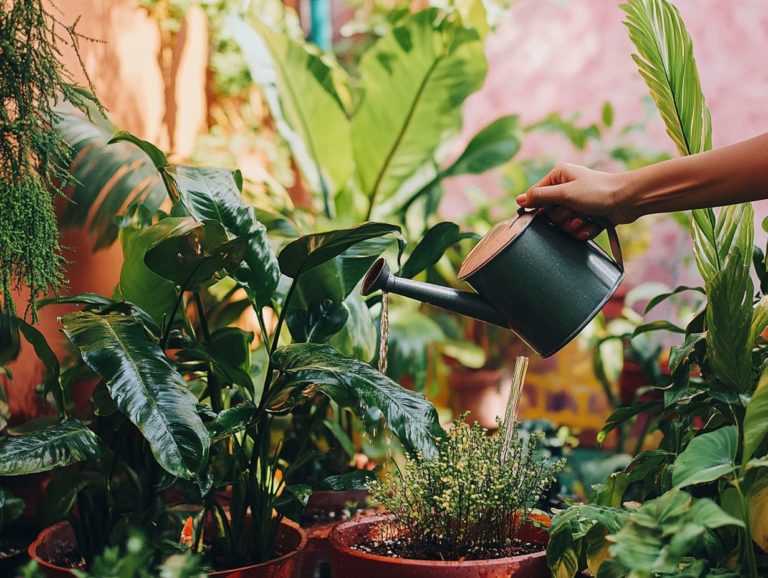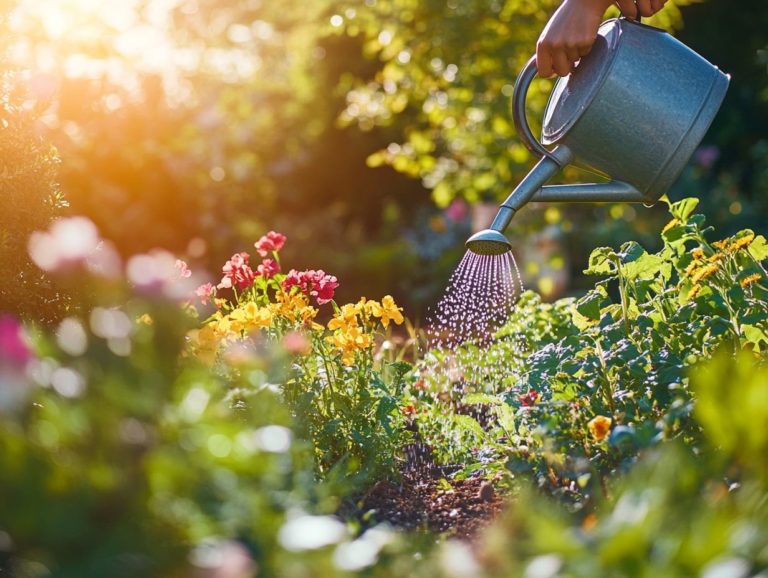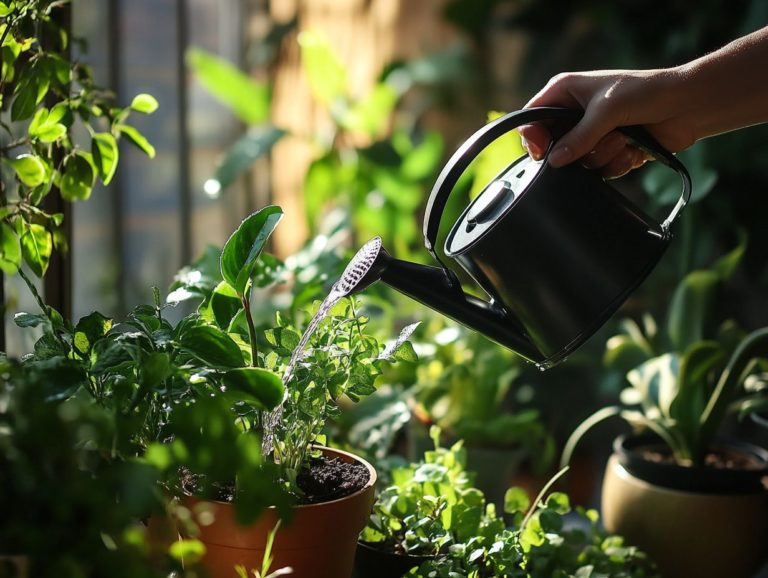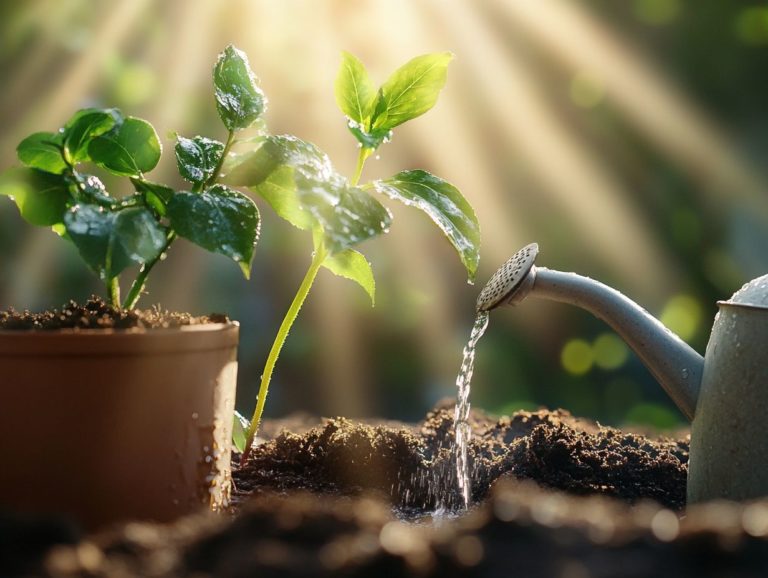How to Test Soil Moisture Before Watering
Want to see your plants thrive? Soil moisture is key! It plays an important role in cultivating healthy plants by impacting growth, nutrient absorption, and overall vitality.
By mastering the assessment and maintenance of soil moisture, you can significantly enhance your gardening success. This article delves into the critical importance of soil moisture for plant health, provides effective methods for testing it, and examines the various factors that can influence moisture levels.
You will also discover practical tips on the optimal timing and techniques for watering based on your findings. Join in as you unveil the secrets to nurturing thriving plants through optimal soil moisture management.
Contents
- Key Takeaways:
- The Importance of Proper Soil Moisture
- Methods for Testing Soil Moisture
- Factors Affecting Soil Moisture
- When to Water Based on Soil Moisture
- Tips for Maintaining Proper Soil Moisture
- Frequently Asked Questions
- Can I test soil moisture before watering my plants?
- What is the best way to test soil moisture?
- How often should I check soil moisture before watering?
- What are the signs of overwatering due to not testing soil moisture?
- Can I test soil moisture in all types of soil?
- Are there any methods to test soil moisture without purchasing a moisture meter?
Key Takeaways:
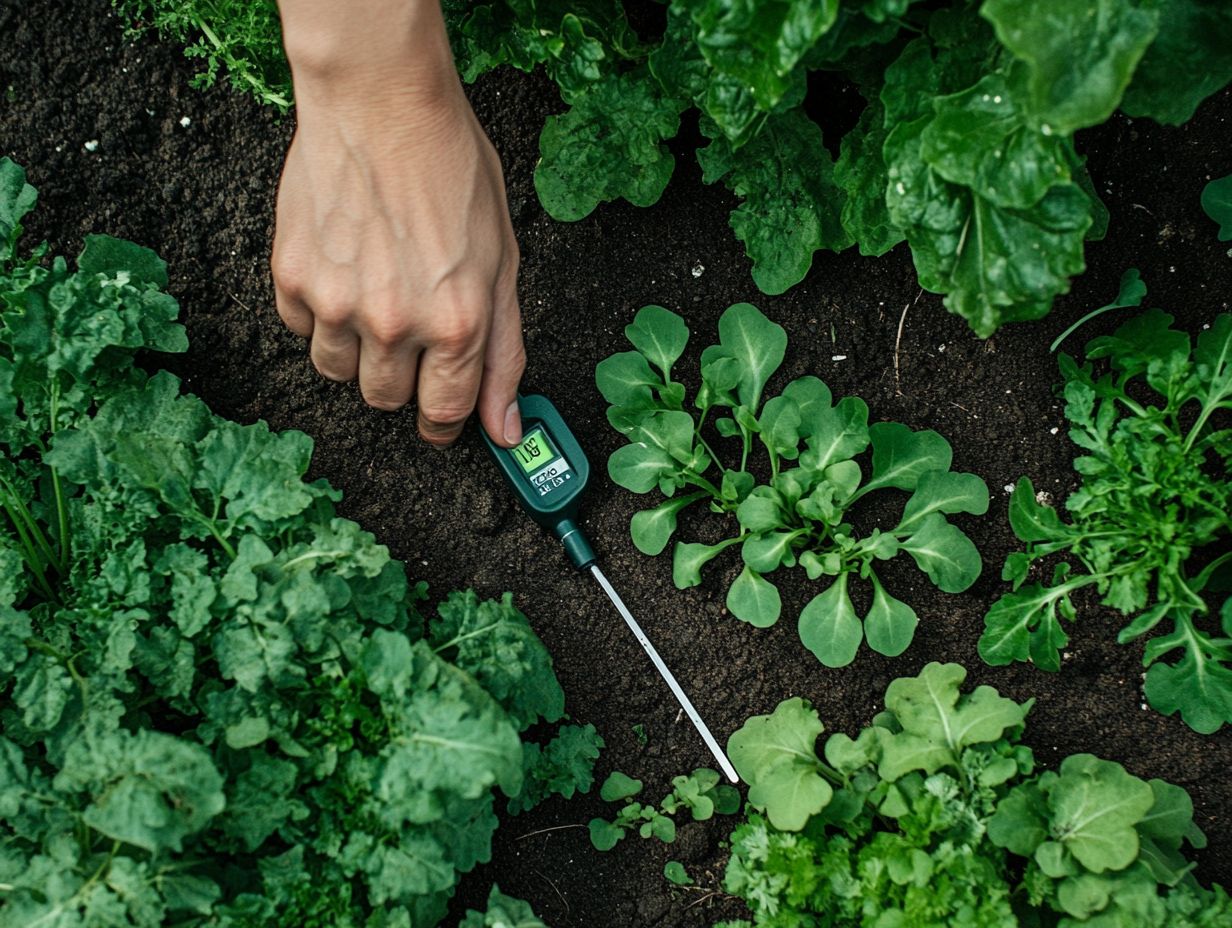
- Proper soil moisture is crucial for plant health and growth.
- A moisture meter is a tool that measures how wet or dry the soil is, while visual inspection and touch tests can also provide useful information.
- Factors like climate, weather conditions, soil type, and drainage play a significant role in determining soil moisture and when to water.
The Importance of Proper Soil Moisture
Proper soil moisture is essential for the health and vitality of your plants. It directly influences their growth, nutrient absorption, and overall well-being.
When moisture levels aren t just right, your plants can experience stress, leading to challenges like overwatering or underwatering that can severely affect their health. Understanding how to maintain optimal soil moisture becomes even more critical in growing plants in the city and indoor gardening.
Environmental factors often fluctuate more than in natural settings. Pay close attention to your plants specific needs to ensure they receive the precise amount of water necessary for robust growth.
Why is Soil Moisture Important for Plant Health?
Soil moisture is crucial for your plants because it directly influences their ability to absorb nutrients and water. This fosters robust growth and vibrant vegetation.
When moisture levels are inadequate, your plants can experience stress, which manifests as wilting or yellowing leaves signs that their growth may be stunted. Conversely, too much moisture can lead to root rot, robbing your plants of the oxygen they need to survive.
Different species have unique water requirements. For example, succulents thrive in dry conditions, while ferns flourish in more humid environments. It s essential to vigilantly monitor soil moisture levels, employing tools like moisture meters or even a simple finger test.
This way, you can achieve that perfect balance to keep your greenery lively and productive.
Methods for Testing Soil Moisture
Evaluating soil moisture is crucial for ensuring effective plant care. You have a range of methods at your disposal to accurately gauge moisture levels.
These methods allow you to provide your plants with the precise amount of water they require for optimal health and growth.
Using a Moisture Meter
A moisture meter serves as an invaluable tool for you, allowing for precise measurement of soil moisture levels in your potted and indoor plants. This gives you the power to fine-tune your watering routines with confidence.
By delivering accurate readings, this device helps you sidestep the pitfalls of under-watering and over-watering common missteps that can lead to plant stress or even root rot. Unlike traditional methods like finger testing or visual inspections, a moisture meter provides a definitive indication of moisture content.
This eliminates guesswork from your gardening practices. With its capability to assess the specific moisture needs of various plant species, it encourages you to cultivate better gardening habits and deepens your understanding of plant care.
Ultimately, mastering moisture levels paves the way for healthier plants and a more rewarding gardening experience. Act now to ensure your plants get the right amount of water they’ll thank you for it!
Visual Inspection and Touch Test
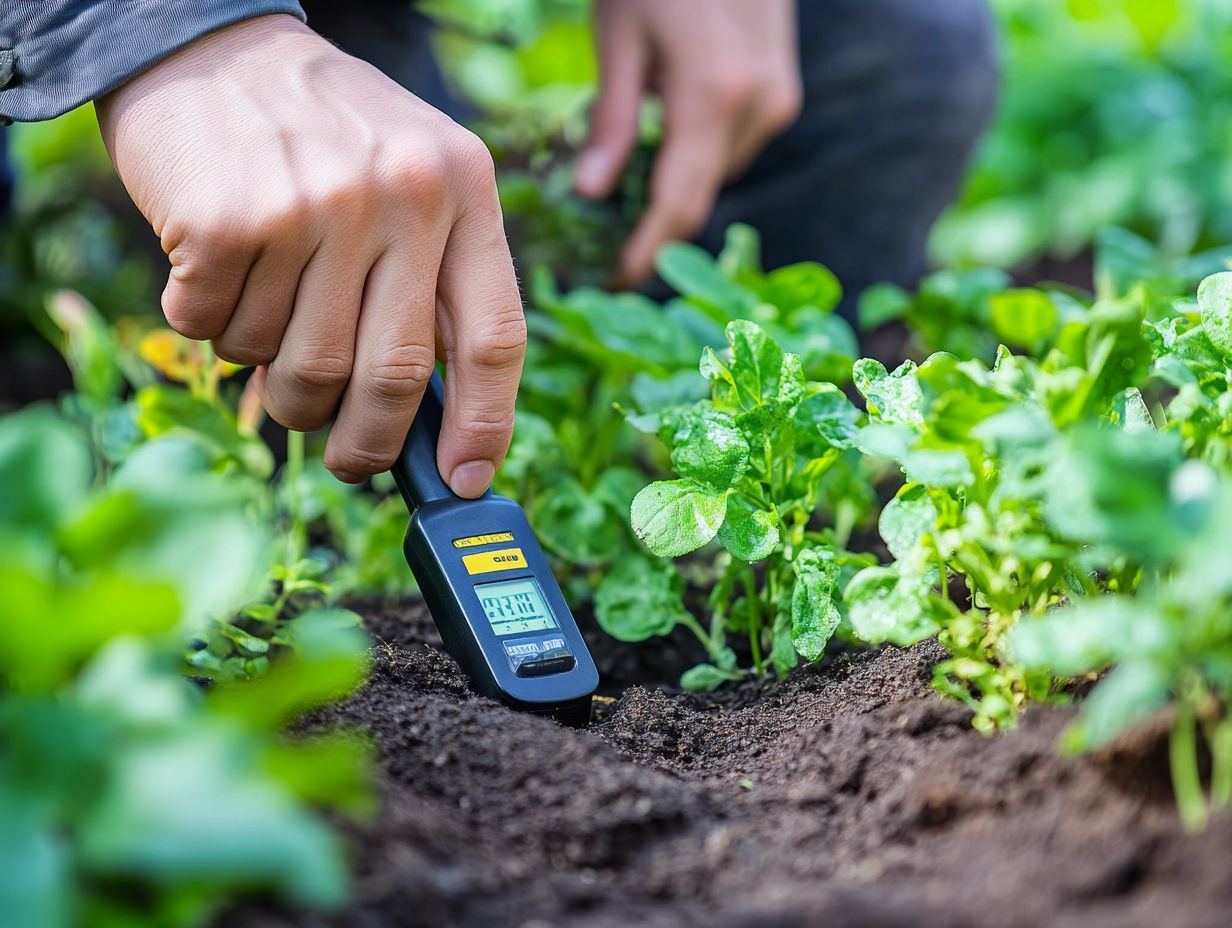
Visual inspection and the finger test are both straightforward yet highly effective strategies for measuring soil moisture, allowing you to swiftly determine when your plants need a drink.
By closely examining the soil s color, structure, and overall appearance, you can easily discover essential insights into its hydration levels. A deep, rich color means the soil is moist. If it s lighter, don’t wait grab that watering can now!
When you use the finger test, softly inserting a finger into the soil helps you assess its texture. Sandy soils drain quickly, while clay retains moisture much longer.
These techniques deliver immediate feedback on soil conditions and empower you to track changes over time. This makes them especially valuable in various environments, from drought-prone regions to more humid climates.
Factors Affecting Soil Moisture
Numerous factors influence soil moisture levels, directly affecting water availability for plants and shaping their growing environment. Understanding these dynamics is essential for maintaining optimal conditions that promote healthy growth.
Climate and Weather Conditions
Climate and weather conditions significantly influence soil moisture levels, affecting how often you should check your plants to meet their watering needs.
Variations in climate ranging from arid regions to humid environments directly affect how quickly soil dries out or retains moisture. In hotter months, evaporation rates soar, often requiring more frequent watering to compensate for lost hydration. During cooler seasons, moisture lingers longer in the soil, which means you could easily overwater if you’re not vigilant.
Enhance your gardening routine by tailoring your watering schedule to daily temperature fluctuations and humidity levels. Using tools like moisture meters or simply checking the top inch of soil can offer valuable insights. Adapting to these seasonal changes fosters healthier plants and conserves water, leading to more efficient gardening practices overall.
Types of Soil and Drainage
The type of soil you work with and its drainage capacity are crucial factors that directly impact soil moisture retention and availability for your plants, ultimately influencing their health and vitality.
Understanding how different soil types like sandy and clay soils affect moisture dynamics allows you to make informed decisions as a gardener or farmer. Sandy soils drain quickly, making them ideal for drought-resistant plants, but this can lead to moisture stress for more delicate varieties. Clay soils excel at retaining water but can become waterlogged, risking root health.
By assessing these characteristics, you can customize your watering routines to meet the specific needs of your plants, ensuring they receive just the right amount of hydration for thriving growth.
When to Water Based on Soil Moisture
Determining when to water your plants based on soil moisture levels is crucial for their health. This prevents issues like overwatering or underwatering, ultimately promoting robust growth and vitality in your greenery.
Interpreting Test Results
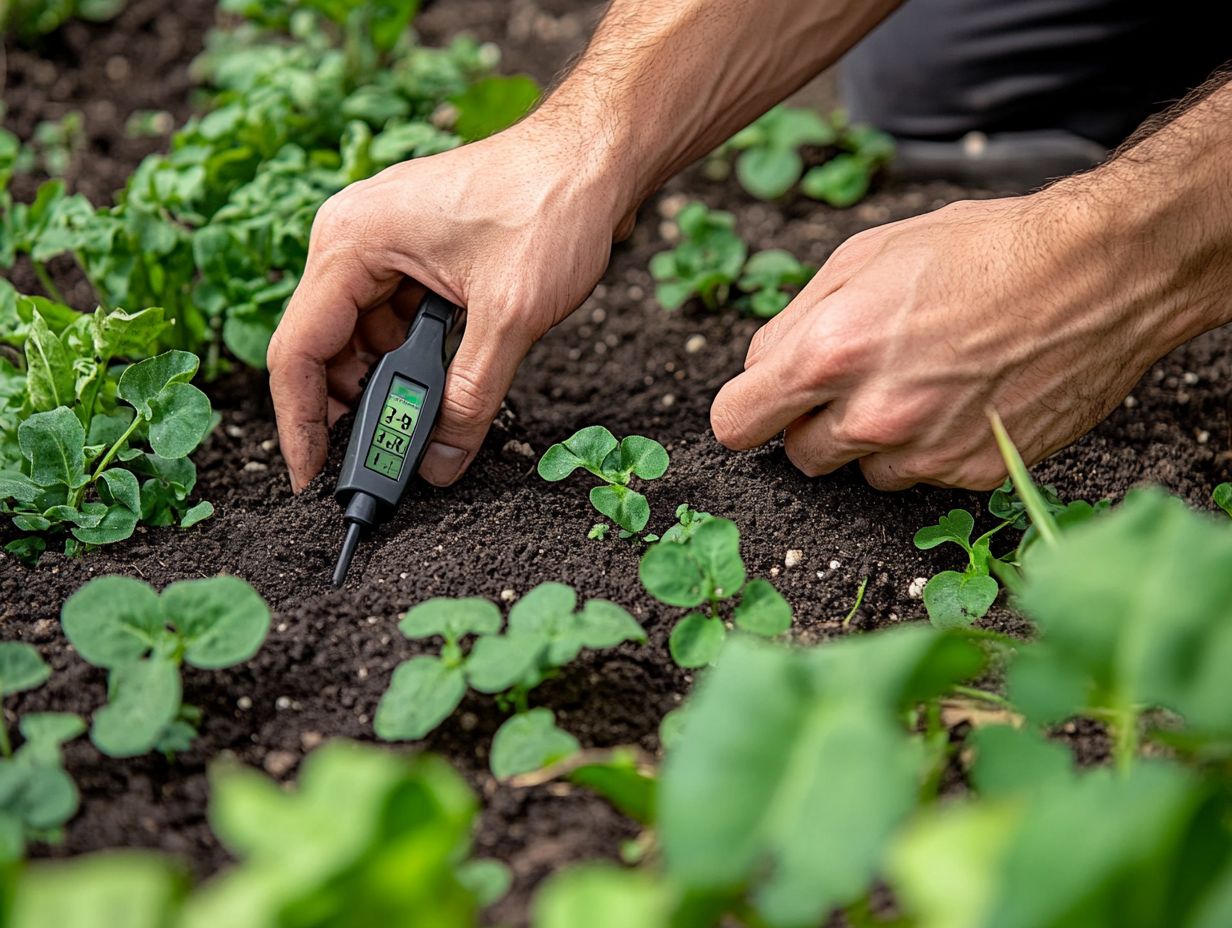
Interpreting soil moisture test results accurately is essential to understanding your plants’ watering needs and ensuring they receive the right amount of water.
By analyzing varying moisture levels, you can determine whether your plants are thriving or struggling with drought stress. For example, readings indicating wet soil might point to overwatering, which can lead to root rot, while dry readings reveal that the soil is parched and urgently requires hydration.
Adjust your watering practices accordingly consider a schedule that allows the top few inches of soil to dry out between watering sessions to promote optimal root development. Understanding these nuances is pivotal in maintaining plant health and fostering a flourishing garden environment.
Tips for Maintaining Proper Soil Moisture
Maintaining proper soil moisture is essential for the health of your plants. By employing good watering methods and establishing consistent routines, you can create optimal conditions that significantly enhance growth.
Watering Techniques and Frequency
Implementing good watering methods and establishing a consistent frequency are essential for successful plant care. This ensures your plants receive the water they need to thrive.
By exploring different methods, such as deep watering, you can encourage roots to grow deeper into the soil. Tailor your approach to suit various plant varieties. Incorporating moisture meters for plants, which are tools that measure the wetness of the soil, allows for precise monitoring of conditions. This enables you to make adjustments based on the specific needs of your plants and their environment.
For instance, some species flourish in consistently moist soil, while others prefer to dry out between waterings.
Understanding these nuances and adapting your techniques accordingly can lead to healthier, more resilient plants. Transform your gardening experience into a flourishing success.
Frequently Asked Questions
Can I test soil moisture before watering my plants?
Yes, test soil moisture before watering to avoid overwatering your plants.
What is the best way to test soil moisture?
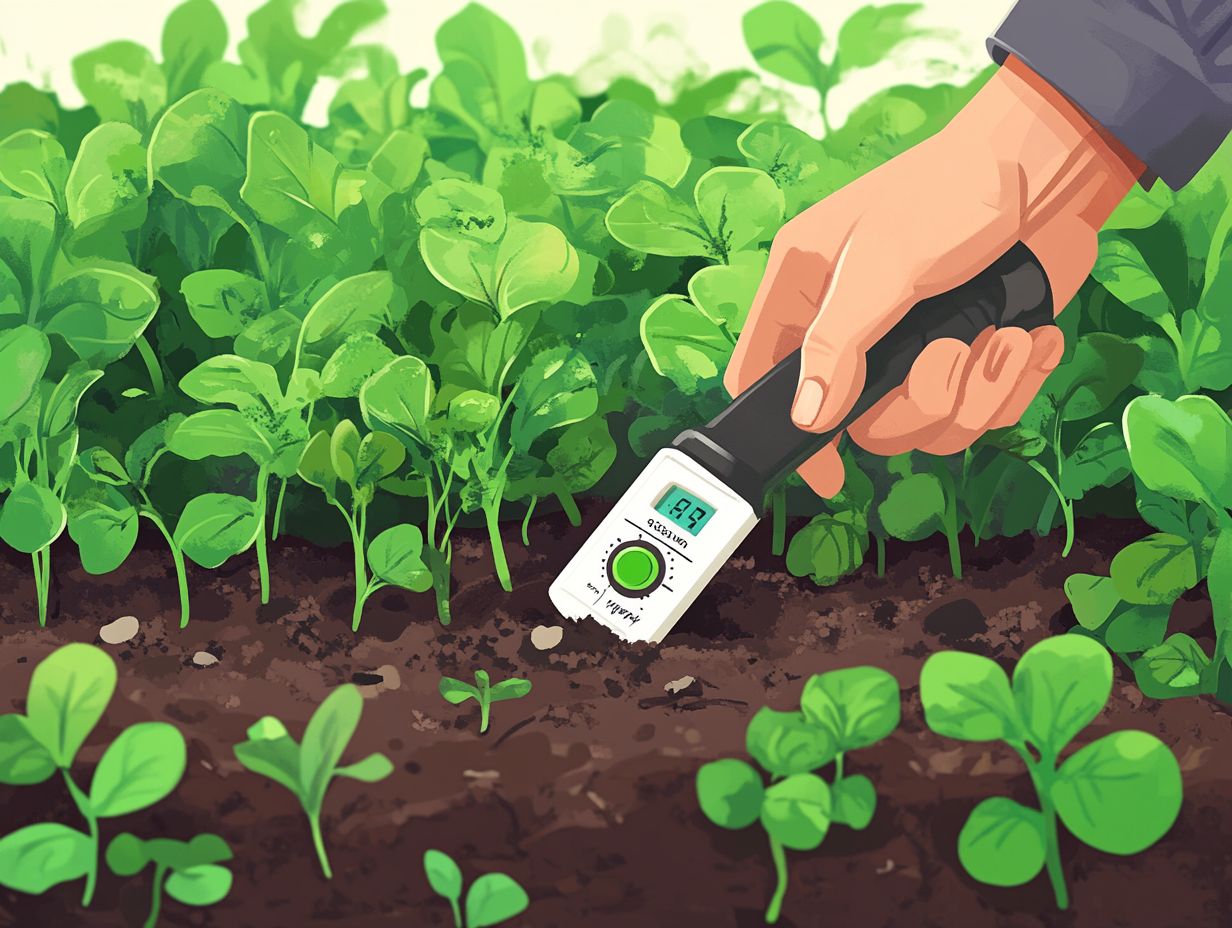
You can test soil moisture by inserting your finger into the soil to feel for dampness, often referred to as the finger test, or by using a moisture meter.
How often should I check soil moisture before watering?
Check soil moisture every few days, as watering frequency can vary depending on plant type and environmental conditions. This helps ensure healthy growth for your potted plants.
What are the signs of overwatering due to not testing soil moisture?
Overwatering can lead to yellowing leaves, wilting, and root rot, greatly affecting plant health. Testing soil moisture helps prevent these issues and reduces the risk of overwatering.
Can I test soil moisture in all types of soil?
Yes, you can test soil moisture in all types of soil, but the method may vary. For example, sandy soil dries out faster than clay soil, impacting moisture levels and care requirements.
Are there any methods to test soil moisture without purchasing a moisture meter?
Yes, you can use the weight test method by picking up the plant and pot to feel the weight, which helps gauge moisture levels, or by using a skewer to poke into the soil and check for dampness.
Start checking your soil moisture today for healthier plants!


